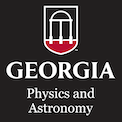Photodynamic therapy is a cancer treatment that combines the effects of oxygen, red light and a photosensitizing dye. The red light is absorbed by dye molecules within the target tissue and the light energy is transferred to molecular oxygen, creating highly reactive oxygen molecules that oxidize tissue components. Clinical results are quite variable because the amount of dye that accumulates in target tissues varies widely between patients. A non-invasive and rapid method to determine the dye content at the time of treatment would allow the light dose to be optimized and may significantly increase the effectiveness of the treatment. I have worked with Herbert Wolfsen, MD (Department of Gastroenterology & Hepatology, Mayo Clinic, Jacksonville) to develop a fluorescence-based method that utilizes a portable fiber optic spectrometer to quantify the Photofrin content in patients undergoing photodynamic therapy for esophageal cancer. I will present an introduction to photodynamic therapy and I will discuss the development of the fluorescence method with clinical results to date.
Events Calendar View
-
Departmental Colloquium
Nov 11, 2010
Light Dosimetry for Photodynamic Therapy
-
NanoSEC Seminar
Nov 12, 2010
Nanotechnology and Infectious Diseases: Opportunity Knocks
Mycoplasmas are significant pathogens in humans, food animals, and wildlife. Existing antibody- and nucleic acid-based methods for detection and diagnosis have severe limitations, the consequences of which range from continued spread and increased risk for development of secondary complications in humans, to increased production costs for food animals. Thus, the inability to provide rapid, sensitive, and expedient detection of mycoplasmas in the complex biochemical backgrounds of clinical specimens is a major obstacle to the control of mycoplasma disease. Nanorod array-surface-enhanced Raman spectroscopy was applied to the detection and identification of Mycoplasma pneumoniae, a leading cause of bronchitis and atypical pneumonia in humans, in simulated and true clinical throat swab samples. Results from those studies will be presented, followed by general observations regarding the interface between nanotechnology and infectious disease research.
-
CSP Lunch Seminar
Nov 16, 2010
Galactic Diffuse Hot Gas: Shadowing Observation and Joint Analysis
-
Departmental Colloquium
Nov 18, 2010
Geometry of Turbulence: a Stroll Through 61,506 Dimensions
In the world of moderate Reynolds number, everyday turbulence of fluids flowing across planes and down pipes a velvet revolution is taking place. Experiments are almost as detailed as the numerical simulations, DNS is yielding exact numerical solutions that one dared not dream about a decade ago, and dynamical systems visualization of turbulent fluid's state space geometry is unexpectedly elegant.
We shall take you on a tour of this newly breached, hitherto inaccessible territory. Mastery of fluid mechanics is no prerequisite, and perhaps a hindrance: the talk is aimed at anyone who had ever wondered why - if no cloud is ever seen twice - we know a cloud when we see one? And how do we turn that into mathematics? -
NanoSEC Seminar
Nov 19, 2010
Reproductive Effects of Carbon Nanotubes for Ceriodaphnia dubia
Large amounts of carbon nanotubes are already being manufactured, which will lead to increasing concentrations of nanomaterials in the environment through accidental spills, product use and degradation, or known releases. Previous research has used acute toxicity tests to assess the potential toxicity of CNTs to freshwater invertebrates and fish, yet few chronic studies have been conducted to assess nonlethal effects. We studied chronic effects of 14C-labeled multi-walled carbon nanotubes (MWNTs) on Ceriodaphnia dubia, an aquatic invertebrate. For chronic exposures 14C- MWNTs were solubilized in moderately hard water (MHW) by four different methods: bath sonication, probe sonication, bath sonication followed by addition of Sewanee River natural organic matter (NOM, 2.3 mg C/L), and by stirring nanotubes overnight in NOM dissolved in MHW. Standard 3-brood chronic toxicity tests were conducted following EPA protocol. Reproductive effects (number and size of broods) and
accumulation of nanotubes by adults and neonates were measured in replicated experiments for each solubilization treatment.Ceriodaphnia exposed to bath-sonicated MWNTs had significantly smaller brood numbers and size at the 2.5 mg/L concentration (LOEC), compared with controls. Exposures with probe-sonicated nanotubes showed less reproductive toxicity, with a LOEC of 5 mg/L. No reproductive toxicity was observed for nanotube exposures with added NOM (LOEC > 5 mg/L). Reproductive toxicity of the bathsonicated nanotubes may be related to association of the MWNTs onto the body surfaces of the adults,
which likely interfered with molting and prevented neonate release (Fig. 1).We hypothesize that the surface association and reproductive toxicity of the bath-sonicated nanotubes is related to the larger nanotube size and higher degree of aggregation in these treatments. Probe sonicated MWNT solutions were more transparent and may have contained smaller-sized nanotubes. Solubilization of MWNTs in NOM likely increased their water solubility, reducing their potential to associate with adult body surfaces. However, neonates exposed to the NOM-solubilized nanotubes accumulated 14C-nanotubes in a concentration-dependent manner, suggesting ingestion of these more soluble nanotubes. Neonates and adults exposed to bath-sonicated MWNTs randomly accumulated 14C-MWNTs, likely by adherence of larger aggregates to body surfaces. This is one of the first known studies to document reproductive effects and accumulation of MWNTs in aquatic invertebrates and emphasizes the need to assess chronic, non-lethal effects of nanomaterials in aquatic organisms.
-
Departmental Colloquium
Dec 2, 2010
Postponed
Page 15 of 121, showing 6 records out of 723 total, starting on record 85, ending on 90


